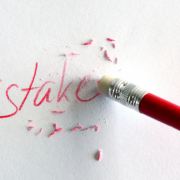Collaboration with Competitors: Organisational Destruction or Evolution?
Collaboration between competitors has been in fashion for quite some time. Back at the end of the 1980s, General Motors and Toyota assemble automobiles, Siemens and Philips develop semiconductors, Canon supplies photocopiers to Kodak, France’s Thomson and Japan’s JVC manufacture videocassette recorders. But the spread of what we call “competitive collaboration”—joint ventures, outsourcing agreements, product licensings, cooperative research—has triggered unease about the long-term consequences. A strategic alliance can strengthen both companies against outsiders even as it weakens one partner vis-à-vis the other. In particular, alliances between Asian companies and Western rivals seem to work against the Western partner. Cooperation becomes a low-cost route for new competitors to gain technology and market access. ICL, the British computer company, could not have developed its current generation of mainframes without Fujitsu. Motorola needs Toshiba’s distribution capacity to break into the Japanese semiconductor market. Time is another critical factor. Alliances can provide shortcuts for Western companies racing to improve their production efficiency and quality control. Yet the case for collaboration is stronger than ever. It takes so much money to develop new products and to penetrate new markets that few companies can go it alone in every situation. The risks of collaborating with rivals might seem daunting, but a study
by the Multidisciplinary Digital Publishing Institute finds the benefits are likely to outweigh any disadvantages. The study found that this kind of collaborative competition, when it lasted from three to five years, had more than a 50% chance of mutually reducing company costs.
“Nowadays, the best partner might be your direct competitor,” says Paavo Ritala, a professor of Strategy and Innovation at LUT University of Technology in Finland. “Competitors tend to face similar markets and use similar resources and technologies. They typically have to deal with similar challenges at large. Thus, with rising costs of R&D and globalizing competition, it often makes sense to collaborate with competitors on product development, innovation and joint manufacturing.” Another example is, YouTube and Vimeo have a similar relationship. During an innovation panel at the 2019 ForbesWomen Summit, Vimeo CEO Anjali Sud shared that the video platform joined forces with YouTube, one of its main competitors by allowing creators to publish their videos to YouTube, as well as to other video platforms.
The term “coopetition” whilst explaining a relatively contemporary idea, has been coined back in 1996 by Yale School of Management professor Barry Nalebuff and NYU Stern School of Business professor Adam M. Brandenburger when they noticed an increasing number of these kinds of partnerships among rivals, especially in the digital space, and set out to research the theory that turned into their book “Co-Opetition”.
The Role of Sales Enablement Technology
Collaboration serves to leverage the internal pool of talent, knowledge, and experience but also improves internal communication and empowers employees. The result is a boost in productivity, efficiency, and effectiveness, driving results. Technology empowers today’s workforces by connecting more employees than ever before. A sales enablement tool such as Seismic improves marketing and sales collaboration and communication by using real-time data from best practices and peers to determine what content is most effective at progressing deals and generating the highest ROI and then surfacing recommended content based on the Salesforce record and provide recommended sales collateral within their currently workflow.
For example, Seismic can integrate wherever your sellers work such as the CRM email and Slack. This allows sales reps to deliver the right message at the right time and allows them to remain focused on sales objectives, rather than on how to out-perform their peers.
How to Build Secure Defenses
For collaboration to succeed, each partner must contribute something distinctive: basic research, product development skills, manufacturing capacity, access to distribution. The challenge is to share enough skills to create advantage vis-à-vis companies outside the alliance while preventing a wholesale transfer of core skills to the partner. This is a very thin line to walk. Companies must carefully select what skills and technologies they pass to their partners. They must develop safeguards against unintended, informal transfers of information. The goal is to limit the transparency of their operations.
Western companies face an inherent disadvantage because their skills are generally more vulnerable to transfer. The magnet that attracts so many companies to alliances with Asian competitors is their manufacturing excellence—a competence that is less transferable than most. Just-in-time inventory systems and quality circles can be imitated, but this is like pulling a few threads out of an oriental carpet. Manufacturing excellence is a complex web of employee training, integration with suppliers, statistical process controls, employee involvement, value engineering, and design for manufacture. It is difficult to extract such a subtle competence in any sort of way.
So companies must take steps to limit transparency. One approach is to limit the scope of the formal agreement. It might cover a single technology rather than an entire range of technologies; part of a product line rather than the entire line; distribution in a limited number of markets or for a limited period of time. Moreover, agreements should establish specific performance requirements. Motorola, for example, takes an incremental, incentive-based approach to technology transfer in its venture with Toshiba. The agreement calls for Motorola to release its microprocessor technology incrementally as Toshiba delivers on its promise to increase Motorola’s penetration in the Japanese semiconductor market. The greater Motorola’s market share, the greater Toshiba’s access to Motorola’s technology.
Enhance the Capacity to Learn
Whether collaboration leads to competitive surrender or revitalization depends foremost on what employees believe the purpose of the alliance to be. It is self-evident: to learn, one must want to learn. Western companies won’t realize the full benefits of competitive collaboration until they overcome an arrogance borne of decades of leadership. In short, Western companies must be more receptive. Learning begins at the top. Senior management must be committed to enhancing their companies’ skills as well as to avoiding financial risk. But most learning takes place at the lower levels of an alliance. Operating employees not only represent the front lines in an effective defense but also play a vital role in acquiring knowledge. They must be well briefed on the partner’s strengths and weaknesses and understand how acquiring particular skills will bolster their company’s competitive position.
Competitive benchmarking is a tradition in most of the Japanese companies we studied. It requires many of the same skills associated with competitor analysis: systematically calibrating performance against external targets; learning to use rough estimates to determine where a competitor (or partner) is better, faster, or cheaper; translating those estimates into new internal targets; and recalibrating to establish the rate of improvement in a competitor’s performance. The great advantage of competitive collaboration is that proximity makes benchmarking easier.
Competitive collaboration also provides a way of getting close enough to rivals to predict how they will behave when the alliance unravels or runs its course. How does the partner respond to price changes? How does it measure and reward executives? How does it prepare to launch a new product? By revealing a competitor’s management orthodoxies, collaboration can increase the chances of success in future head-to-head battles.
Knowledge acquired from a competitor-partner is only valuable after it is diffused through the organisation. Several companies we studied had established internal clearinghouses to collect and disseminate information. The collaborations manager at one Japanese company regularly made the rounds of all employees involved in alliances. He identified what information had been collected by whom and then passed it on to appropriate departments. Another company held regular meetings where employees shared new knowledge and determined who was best positioned to acquire additional information.
Given our current situation knowing that your colleagues or employees are best suited for this new scenario we find ourselves in. Finding the right talent, the best fit for the job and your organisation can be a very challenging task. It is now important to find out whether your managers or your team is well-equipped of working together from various locations. It requires deep knowledge of their personalities, strengths, weaknesses, interests, work style and other characteristics. Our technology and solutions will do the work for you, helping you discover if your people are resilient during times of hardship, if they are autonomous, if they are team players, without actual human contact. Given that our platform is cloud-based, everyone can use it from home as well. Humanity finds itself at a crossroad for various reasons now, why not help people discover and develop themselves from the comfort of their own homes?
Request a free demo:

Sources:
https://hbr.org/2021/01/when-should-you-collaborate-with-the-competition
https://foundr.com/competitive-collaboration-boost-brand#:~:text=By%20embracing%20competitive%20collaboration%2C%20you,be%20on%20the%20losing%20side.
https://seismic.com/company/blog/competition-vs-collaboration-what-drives-high-performing-sales/











